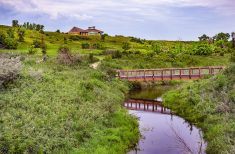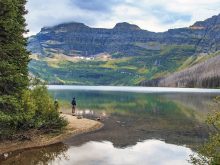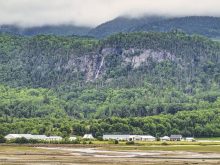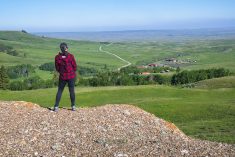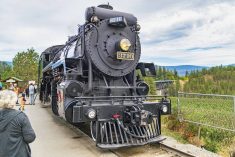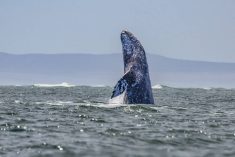A short road trip in Saskatchewan’s northwest combines pleasant river valley scenery with nature sites, the artistry of a German count and history from the tumultuous days of the 1885 conflict.
A convenient starting point is the town of St. Walburg, where visitors are greeted by a life-sized bronze statue of Count Berthold von Imhoff riding his horse. Born in Germany, Imhoff gained fame as an artist, eventually settling near St. Walburg, where he built his home and studio. Specializing in religious paintings, Imhoff decorated churches throughout Saskatchewan and parts of the United States.
We can see some of Imhoff’s work in the former Roman Catholic Church that is now the St. Walburg and District Historical Museum. The primary place to see his paintings, however, is the Imhoff Gallery on the nearby farm where the artist lived and worked until he died in 1939. More than a gallery, it also tells the larger story of the artist who, among his other accomplishments, was knighted by the Pope.
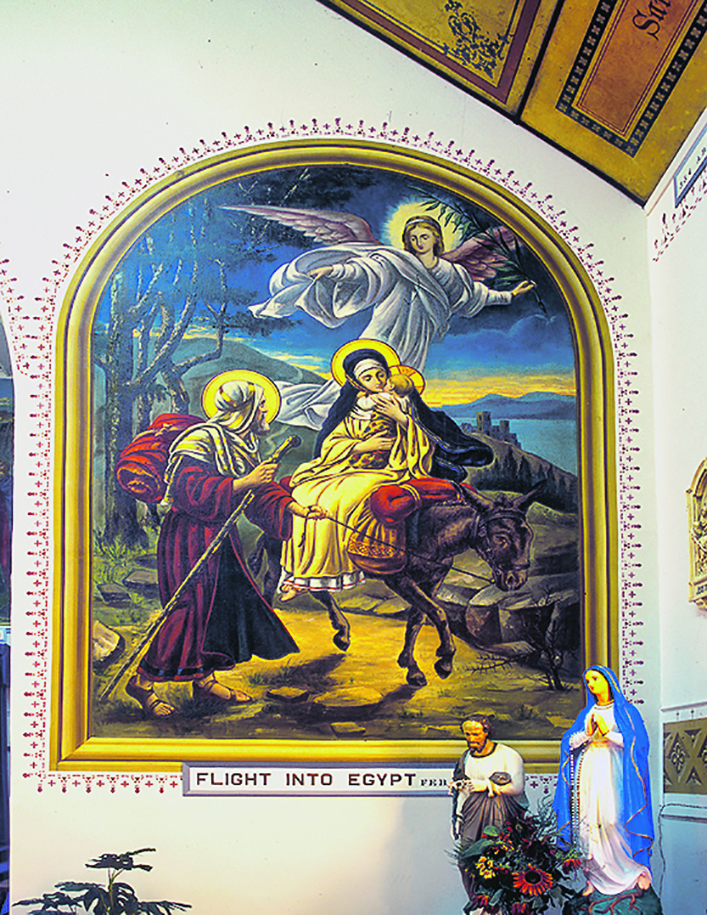
Follow Highway 3 west to Paradise Hill, where there is an outstanding example of a church decorated by Imhoff. Visiting Our Lady of Sorrows Roman Catholic Church is like walking through a biblical art gallery, with many paintings accented by dazzling gold leaf. A huge depiction of the crucifixion covers the ceiling.
The village got its appealing name when early settlers succumbed to gold fever and headed to the Klondike. They didn’t find gold, only hardship so severe that they had to butcher their pack horse to survive. When they eventually made it back home, one of the men likened it to returning to paradise.
Another prominent link to the past is the twice-life-size statue of an ox and Red River cart at the entrance to town. It commemorates the historic Carlton Trail, the early overland route between Fort Garry and Fort Edmonton, originally travelled by ox cart.
A bit farther west along Highway 3 is the turnoff to Frenchman Butte. Near the intersection, take a short one-kilometre detour south to see Holy Trinity Anglican Church at Deer Creek. Tiny, and built of local field stones, it’s among the most picture-perfect country churches anywhere.
The hamlet of Frenchman Butte is spread along the banks of the North Saskatchewan River Valley, where practically everyone has a great view. The top attraction is the expansive Frenchman Butte Museum, once voted the “Best Small Town Museum in Saskatchewan” in a reader’s survey in Prairies North Magazine.
There’s everything from a restored Canadian National Railway station to a school house, exhibits on the settlement era and the 1885 conflict. Much of the large collection was started by local historian and museum founder Lloyd Furman. A nice touch is the Log Cabin Tea House where you can sip tea accompanied by baked goodies supplied by local volunteers.
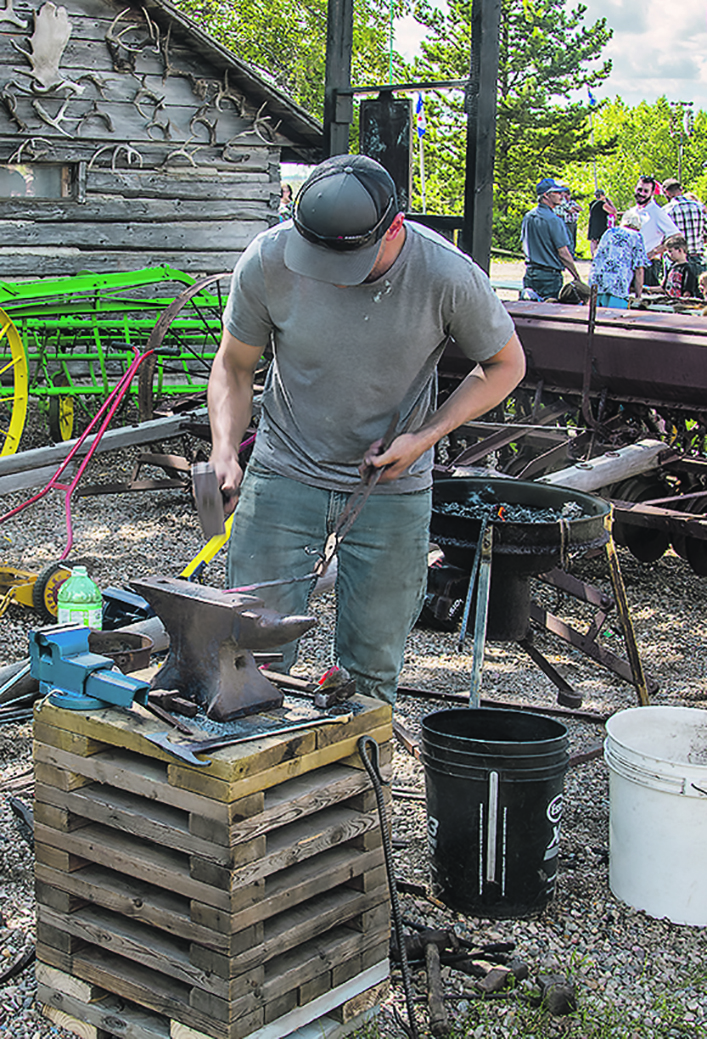
The best time to visit is during the annual Frenchman Butte Museum Festival, scheduled Aug. 13 this year. The day includes a parade, plenty of food, music and special exhibits.
A short drive northeast is the Frenchman Butte battle site, preserved as a National Historic Site. Times were tough for the Cree in the area and many faced starvation. Violence erupted on April 2, 1885, in Frog Lake, just across the border into Alberta, when nine settlers were killed by members of Cree Chief Big Bear’s band.
Big Bear tried to stop the violence but his war chief, Wandering Spirit, and his followers shot the government Indian agent, two priests, and other settlers. They took others captive and moved on to Fort Pitt, where they forced the mounted police to withdraw and then burned the fort.
The government sent the Alberta Field Force to pursue Wandering Spirit’s followers, whom they confronted at Frenchman Butte on May 28. Anticipating an attack, the Cree dug a series of rifle pits on a hilltop overlooking an open coulee.
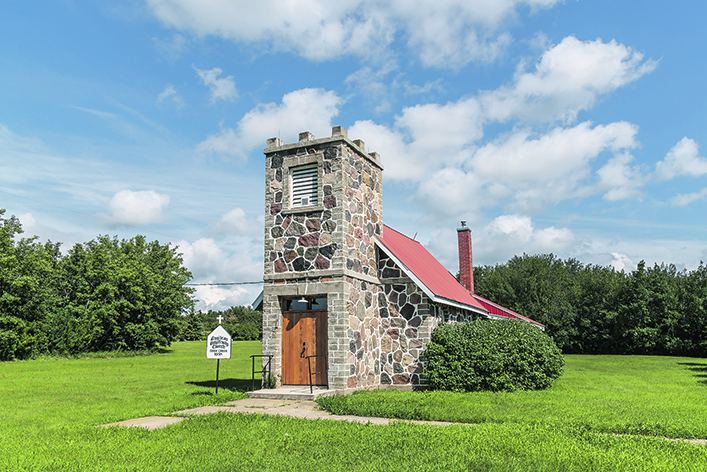
Visitors can follow a walking trail through these defensive positions and see many of the pits and how the battle unfolded. Guns blazed on both sides but ended in a stalemate. Militia leader General Strange knew it would be suicidal to attack across the open coulee with the Cree so well entrenched.
A short drive straight west brings us to the site of Fort Pitt on the banks of the North Saskatchewan River. Not much remains of the site other than foundation markers for the buildings and panels describing the fort’s prominence during the fur trade and its sudden demise in 1885.
Like most places in this region, the scenery alone makes the trip worthwhile.
To make this into a loop trip, follow the grid roads from Fort Pitt almost straight east back to St. Walburg. A highlight along the way is the beautiful Monnery River Valley, another scenic hidden gem.
Arlene and Robin Karpan are well-travelled writers based in Saskatoon. Contact: travel@producer.com.




